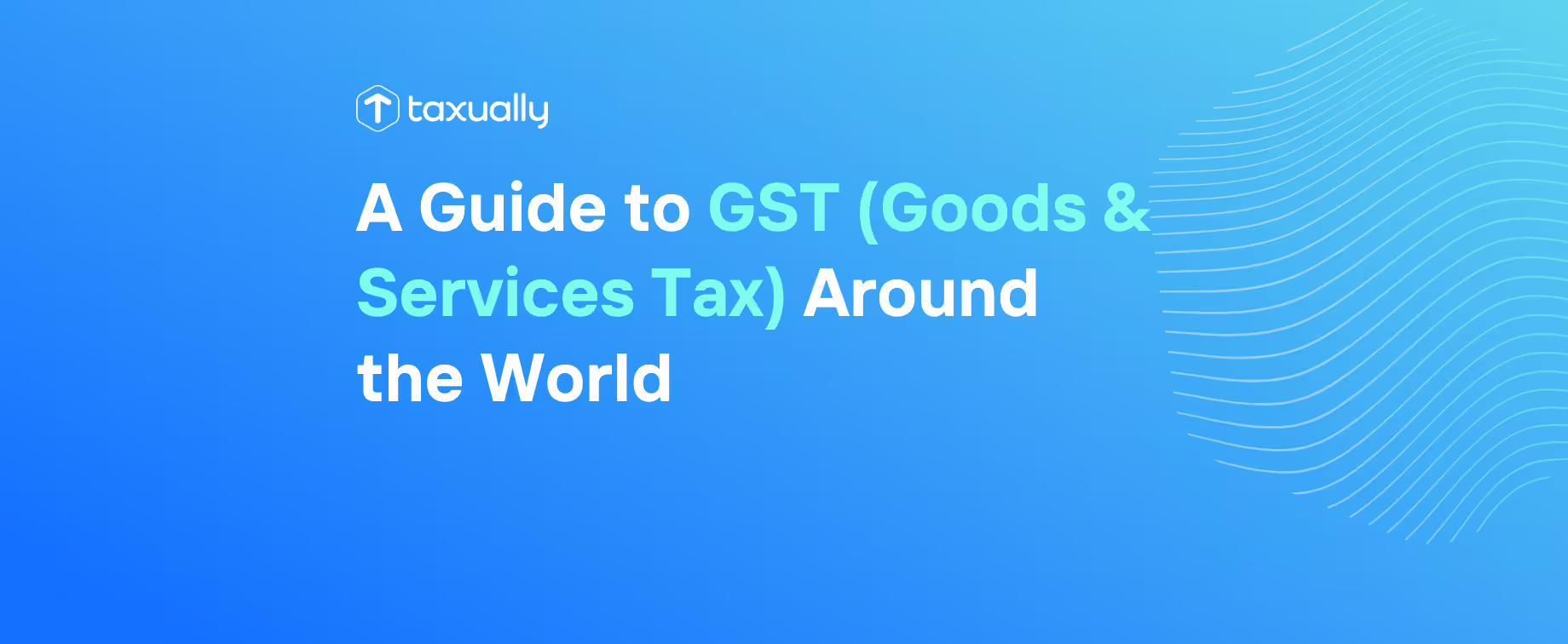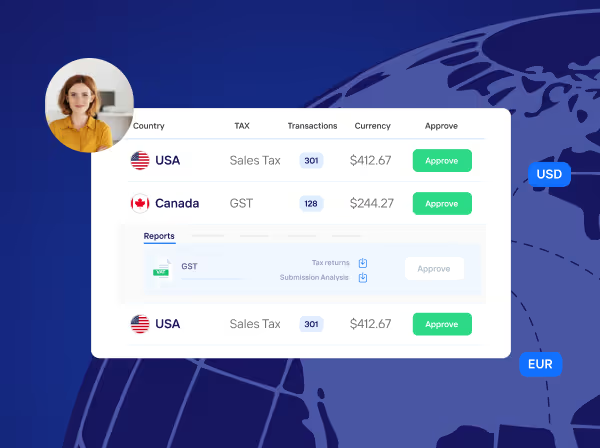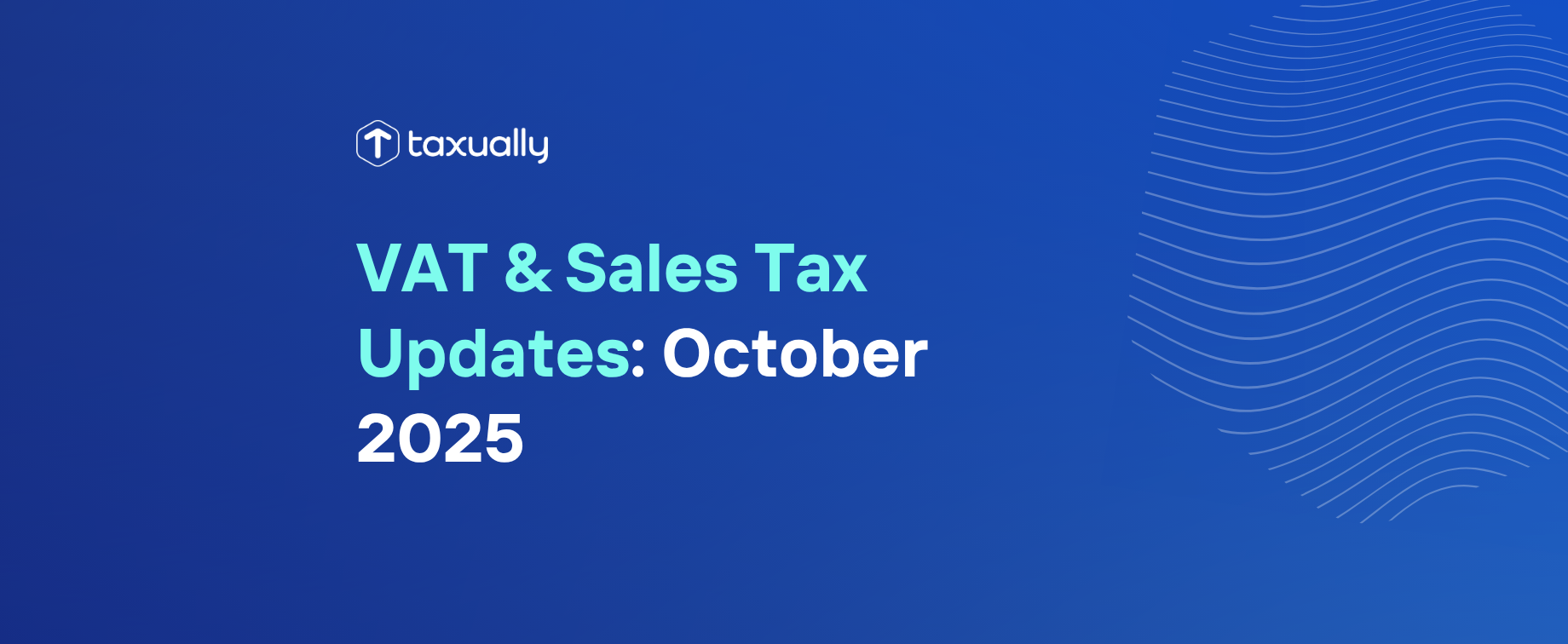Key takeaways
- GST varies widely by country: Rates, thresholds, and filing requirements differ significantly across jurisdictions like Australia, India, and Canada, making localized compliance essential.
- Cross-border sellers must stay alert: Many countries require foreign businesses, especially digital service providers, to register for GST if they exceed certain sales thresholds.
- Automation and expert guidance are key: Managing GST obligations globally is complex, but tax automation tools and experienced advisors can streamline compliance and reduce risk.
GST, or Goods and Services Tax, is a broad-based consumption tax that applies to most goods and services sold domestically in countries that have adopted it. While similar to VAT (Value-Added Tax), GST is a distinct system with its own rules, rates, and compliance requirements.
In this guide, we’ll explore what GST is, how it works in different countries, and what global businesses need to know to stay compliant.
What is GST?

GST is an indirect tax levied on the supply of goods and services. It’s collected at each stage of the supply chain—from manufacturer to wholesaler to retailer—and is ultimately borne by the end consumer. Businesses collect GST on behalf of the government and can usually claim credits for the GST they pay on their business inputs (input tax credits).
Countries that use GST
Several countries around the world use a GST system, though the specifics vary by jurisdiction. Here's a look at how GST is implemented in key countries:
Australia
- GST rate: 10%
- Registration threshold: AUD 75,000 (AUD 150,000 for non-profits)
- Filing frequency: Monthly or quarterly (depending on turnover)
- Input tax credits: Yes
Overview:
Australia introduced GST in July 2000, replacing the previous wholesale sales tax system. It applies to most goods and services, including digital products and imports. Exemptions exist for healthcare, education, some food items, and certain financial services.
Cross-border compliance:
Foreign businesses that supply goods or digital services to Australian consumers (B2C) must register for GST if they exceed the threshold. This includes online marketplaces and SaaS providers.
New Zealand
- GST rate: 15%
- Registration threshold: NZD 60,000
- Filing frequency: Monthly, bi-monthly, or six-monthly
- Input tax credits: Yes
Overview:
New Zealand's GST system, introduced in 1986, is considered one of the simplest and most efficient in the world. It applies broadly with very few exemptions, covering almost all goods and services.
Cross-border compliance:
As of 2019, overseas businesses selling remote services or low-value imported goods (under NZD 1,000) to New Zealand consumers must register for and collect GST.
Singapore
- GST rate: 9%
- Registration threshold: SGD 1 million
- Filing frequency: Quarterly
- Input tax credits: Yes
Overview:
Singapore’s GST system was introduced in 1994 and is known for its efficiency and modern digital compliance framework. It applies to most goods and services, with exemptions for certain financial services and residential property.
Cross-border compliance
Singapore requires foreign businesses supplying digital services (e.g., SaaS, streaming, e-learning) to register under the Overseas Vendor Registration (OVR) regime if their annual B2C sales exceed SGD 100,000 into Singapore.

India
- GST rates: 0%, 5%, 12%, 18%, and 28%
- Registration threshold: INR 40 lakhs (approx. USD 48,000), lower in some states and for service providers
- Filing frequency: Monthly and annual returns
- Input tax credits: Yes (with restrictions)
Overview:
India rolled out its GST regime in 2017 to unify its complex indirect tax system under a single framework. It replaced multiple state and central taxes with a tiered GST structure consisting of:
- CGST (Central GST) – for intra-state transactions
- SGST (State GST) – for intra-state transactions
- IGST (Integrated GST) – for inter-state and international transactions
Cross-Border compliance:
Foreign service providers may be required to register for GST under the IGST model. Reverse charge mechanisms can also apply to imported services. Additionally, e-commerce platforms have unique responsibilities for tax collection and reporting.
Canada
- GST Rate: 5% (federal)
- HST (Harmonized Sales Tax): Applied in certain provinces, combining federal and provincial taxes
- Registration threshold: CAD 30,000
- Filing frequency: Monthly, quarterly, or annually
- Input tax credits: Yes
Overview:
Canada’s GST system applies federally, but some provinces have harmonized GST with their own taxes into a single HST. Others maintain separate Provincial Sales Taxes (PST). This creates a hybrid model depending on your region of operation.
Cross-border compliance
Foreign businesses selling into Canada—especially digital services—may be required to register for GST/HST under the “simplified GST/HST regime” if they exceed the CAD 30,000 threshold. This is particularly relevant for SaaS providers and streaming services.
Why GST compliance matters
Failing to understand and comply with GST obligations can result in:
- Hefty fines and penalties from tax authorities
- Delayed shipments or imports due to tax irregularities
- Lost input tax credits, reducing your bottom line
- Brand damage, especially in highly regulated markets
Tips for managing GST globally
- Track local thresholds: Know when you're obligated to register in each country based on turnover or activity.
- Use tax automation tools: Software like CrossTax and LumaTax can help manage multiple jurisdictions, calculate GST, and file returns accurately.
- Plan for complexity: In countries like India and Canada, be ready to handle region-specific rules and systems.
- Register early: Don’t wait until you exceed a threshold to register—it can take time, and backdated obligations are common.
- Consult tax advisors: Partner with GST experts or tax consultants who understand regional nuances and can help you stay compliant.
Need help managing GST across borders?
Whether you're entering Australia, Canada, Singapore, or India, our team can help you simplify GST registration, filing, and compliance. Book a free call with one of our experts to find bespoke solutions for your business, optimize your GST costs, and reach millions of new potential customers.
Frequently asked questions
New Year's Day - 1/1/2024Memorial Day - 5/27/20244th of July - 7/4/2024Labor Day - 9/2/2024Thanksgiving Day - 11/28/2024Day after Thanksgiving - 11/29/2024Christmas Eve - 12/24/2024Christmas Day - 12/25/2024
What is GST and how does it differ from VAT?
GST (Goods and Services Tax) is a consumption tax on most goods and services, similar to VAT but administered differently depending on the country. Both allow input tax credits, but GST often applies at the national rather than regional level.
Do foreign businesses need to register for GST?
Yes, many countries require overseas sellers—especially those providing digital services or e-commerce sales—to register once they exceed a local turnover threshold (e.g., Australia, Singapore, New Zealand).
How can global businesses stay compliant with GST rules?
Use automation tools like CrossTax or LumaTax to manage multi-country filings, track thresholds, and stay updated on rate changes. Consulting local tax experts also helps prevent penalties and filing delays.



















